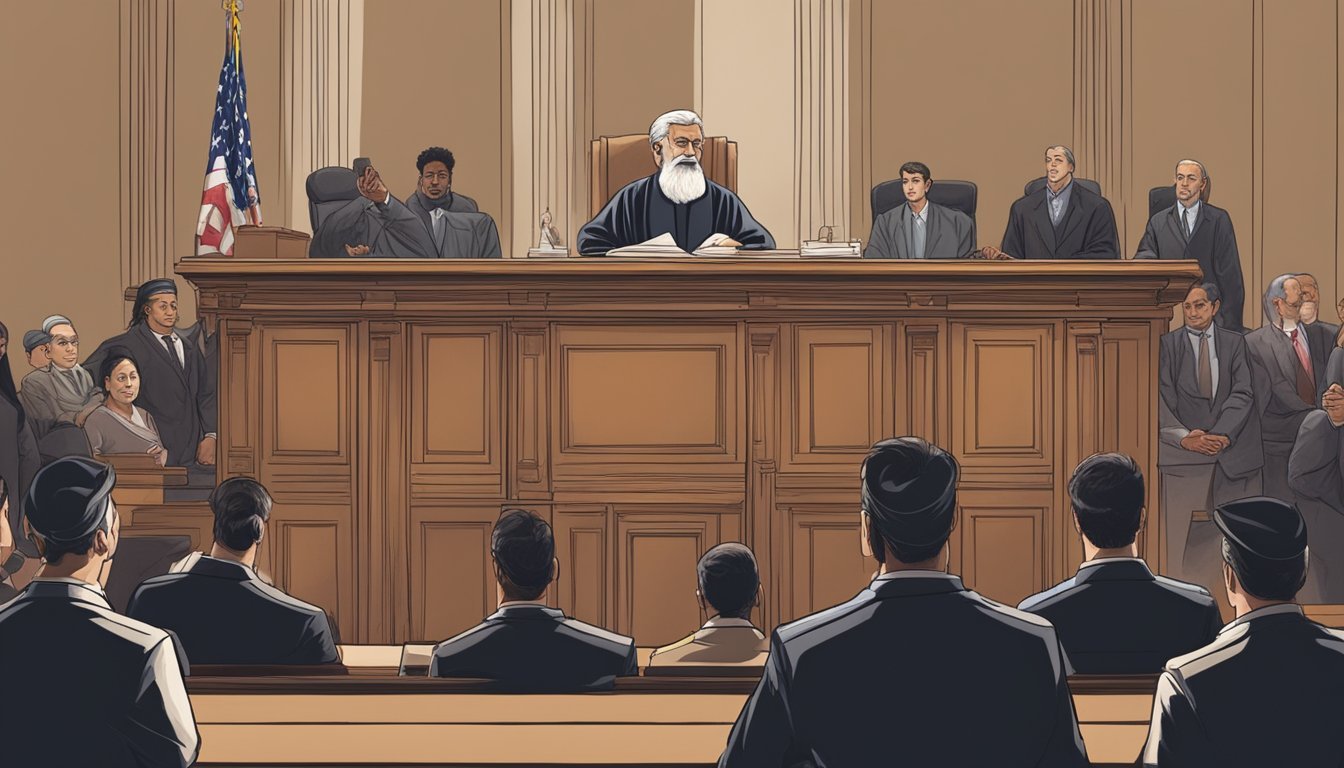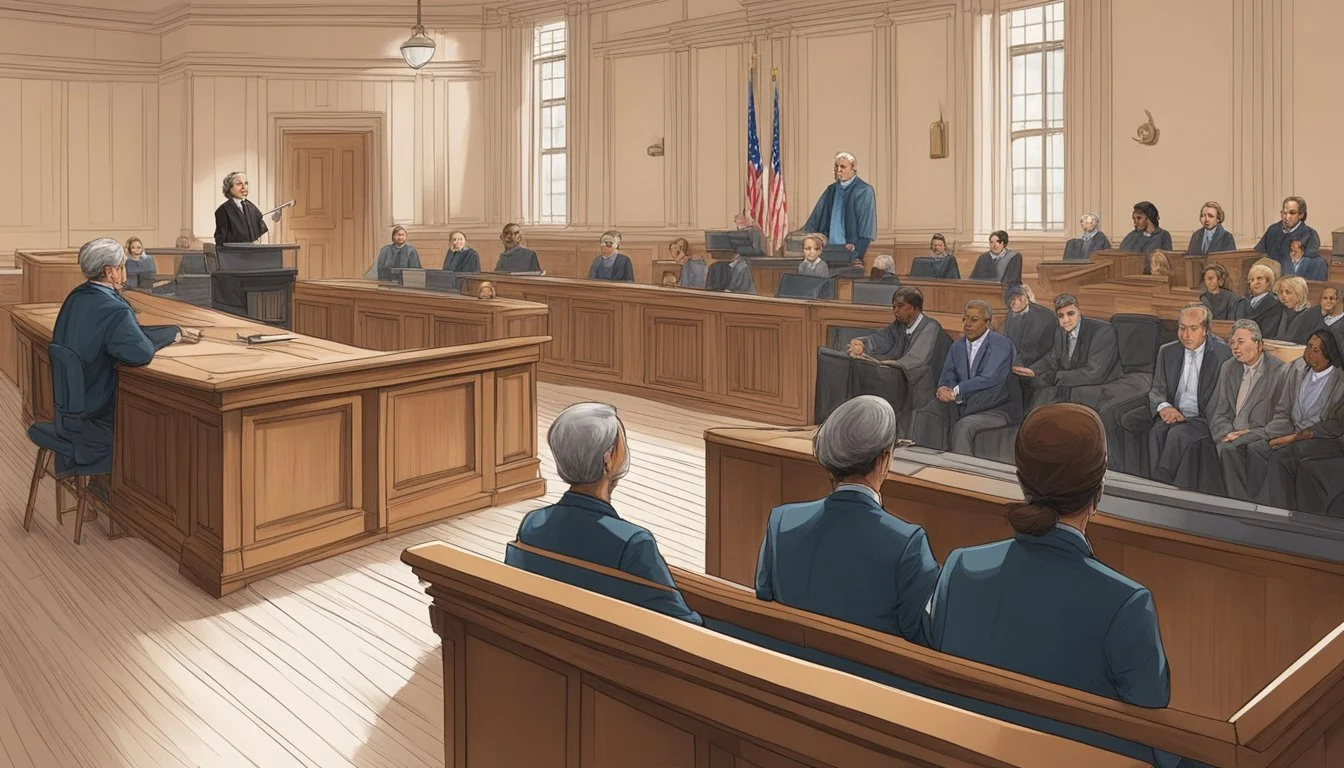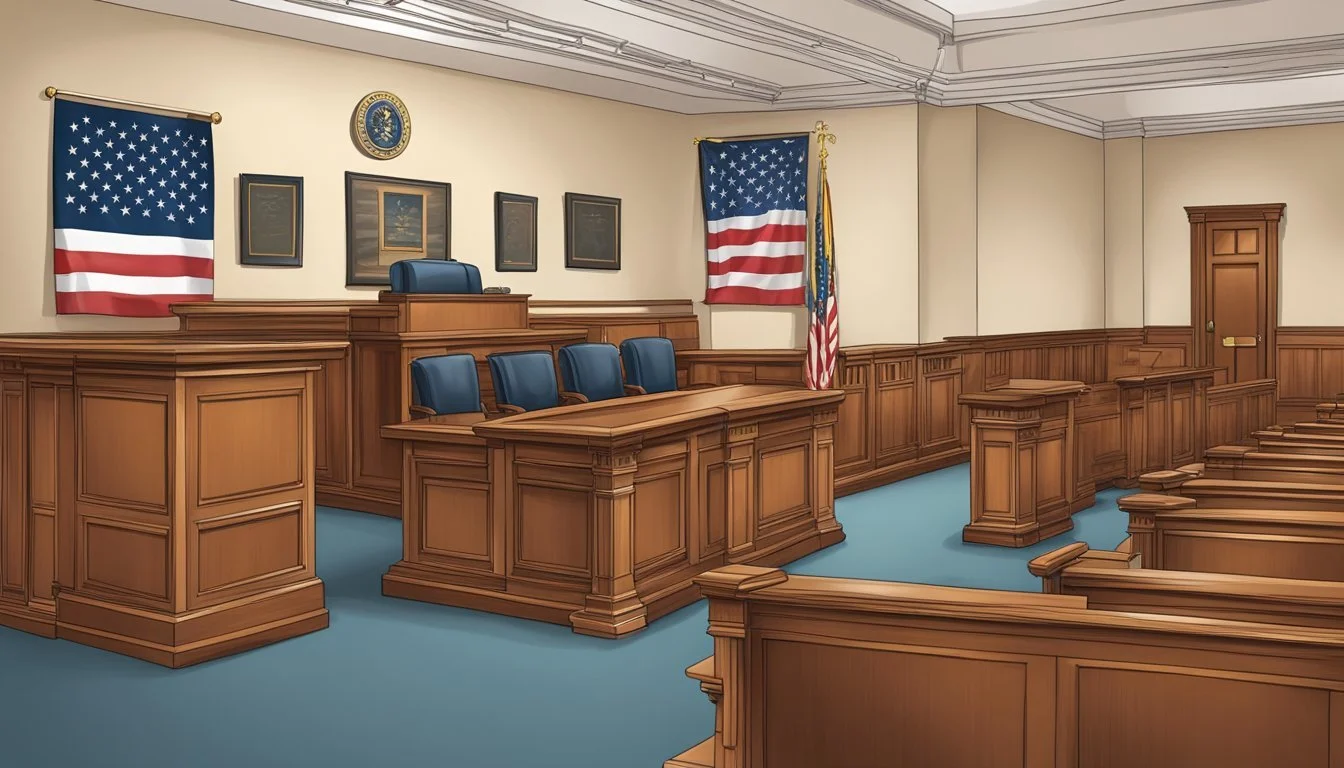American Nightmare: Examining the Intersection of Race and Criminal Justice
Systemic Inequalities Exposed
The intersection of race and criminal justice in America reveals a deeply troubling reality. For decades, the U.S. criminal justice system has disproportionately impacted racial and ethnic minorities, particularly Black Americans. This racial disparity is evident across all stages of the justice process, from arrests and sentencing to incarceration rates and post-release outcomes.
Statistics paint a stark picture of inequality. Black Americans are more likely to be stopped, searched, and arrested by police compared to white Americans. They face harsher sentences for similar crimes and are overrepresented in prisons and jails nationwide. These disparities cannot be explained by differences in crime rates alone, pointing to systemic biases within the justice system itself.
The roots of this issue run deep, intertwining with the nation's history of slavery, segregation, and ongoing socioeconomic inequalities. Addressing racial disparities in criminal justice requires a multifaceted approach, including reforms to policing practices, sentencing guidelines, and rehabilitation programs. It also necessitates a broader societal reckoning with the legacy of racism in America.
Historical Context of Race in the Legal System
The American legal system has been deeply shaped by racial dynamics since the nation's founding. Longstanding policies and practices have created enduring disparities in how different racial groups experience criminal justice.
Legacy of Slavery and Racial Segregation
Slavery profoundly influenced early American law, with enslaved people denied basic rights and legal protections. The 13th Amendment abolished slavery but allowed forced labor as punishment for crime, leading to exploitative convict leasing systems targeting Black Americans.
Jim Crow laws enforced racial segregation and discrimination across the South for decades after the Civil War. These laws criminalized many aspects of Black life and were selectively enforced to control and oppress the Black community.
The legacy of slavery and segregation created systemic inequalities in policing, prosecution, and sentencing that persist today. Studies show racial disparities at every stage of the criminal justice process.
Civil Rights Movement and Criminal Law
The Civil Rights Movement of the 1950s-60s challenged racial injustice and discriminatory laws. Landmark Supreme Court rulings like Brown v. Board of Education (1954) struck down legal segregation.
The Civil Rights Act of 1964 and Voting Rights Act of 1965 outlawed discrimination and removed barriers to Black political participation. However, subsequent "tough on crime" policies disproportionately impacted communities of color.
Mass incarceration expanded dramatically in the late 20th century, with people of color overrepresented in prisons. Racial profiling and biased enforcement of drug laws exacerbated existing disparities in the justice system.
The Modern Criminal Justice Framework
The American criminal justice system operates through interconnected components shaped by policies and practices. This framework aims to maintain public safety and administer justice, but faces ongoing challenges related to fairness and effectiveness.
Key Elements of the Criminal Justice System
Law enforcement agencies form the front line of the justice system. Police departments investigate crimes and make arrests. Courts then adjudicate cases through trials and sentencing. The corrections system carries out punishments through incarceration, probation, and parole.
Prosecutors play a pivotal role in deciding which cases to pursue. Public defenders represent those who cannot afford attorneys. Judges oversee court proceedings and determine sentences.
Specialized courts handle specific types of cases like drug offenses or juvenile crimes. Forensic labs analyze evidence. Victim services provide support to those impacted by crime.
Influence of Policy and Practice
Legislation shapes the criminal justice framework at federal, state, and local levels. Sentencing guidelines influence judicial decisions. Mandatory minimum sentences reduce discretion in some cases.
Policing strategies like community policing or stop-and-frisk impact how laws are enforced. Plea bargaining resolves most cases without trials. Diversion programs offer alternatives to incarceration for some offenders.
Risk assessment tools inform decisions about pretrial release and sentencing. Restorative justice approaches focus on repairing harm rather than punishment alone. Body cameras aim to increase police accountability.
Drug policies significantly impact arrest and incarceration rates. Reforms like bail reform and decriminalization of certain offenses alter system dynamics.
Disparities in Legal Outcomes
Racial disparities permeate the American criminal justice system, manifesting in sentencing decisions, arrests, prosecutions, and long-term impacts on communities of color.
Race and Sentencing Decisions
Studies consistently show that Black and Latino defendants receive harsher sentences than white defendants for similar crimes. For example, Black men typically face sentences 19.1% longer than white men for federal offenses. This disparity persists even when controlling for factors like criminal history and offense severity.
Mandatory minimum sentences disproportionately affect people of color. Drug offenses, which carry steep mandatory minimums, see higher arrest and conviction rates for Black individuals despite similar usage rates across races.
Judges' discretion in sentencing can also lead to unequal outcomes. Implicit biases may influence decisions on bail, probation, and incarceration length.
Racial Bias in Prosecutions and Arrests
Law enforcement practices contribute significantly to racial disparities. Black Americans are 3.64 times more likely to be arrested for marijuana possession than white Americans, despite similar usage rates.
Prosecutorial discretion plays a crucial role:
Charging decisions
Plea bargain offers
Bail recommendations
These choices often disadvantage defendants of color. For instance, prosecutors are more likely to charge Black defendants under laws carrying mandatory minimum sentences.
Stop-and-frisk policies have disproportionately targeted Black and Latino individuals, leading to more arrests and prosecutions in these communities.
Impact on Youth and Future Generations
Racial disparities in the justice system have long-lasting effects on young people of color. Black youth are 5 times more likely to be detained or committed than white youth.
School discipline policies often funnel students of color into the criminal justice system:
Black students face harsher punishments for similar infractions
Police presence in schools increases arrests for minor offenses
These early interactions with law enforcement can derail educational and career prospects. Criminal records create barriers to employment, housing, and education, perpetuating cycles of poverty and involvement with the justice system.
Incarceration of parents disrupts families and communities, leading to intergenerational trauma and increased likelihood of future justice system involvement for children.
Sociological and Psychological Dimensions
Racial disparities in the criminal justice system stem from complex sociological and psychological factors. These include deeply ingrained stereotypes, biased public perceptions, and oversimplified narratives about crime and violence.
Public Perception and Racial Stereotyping
Racial stereotypes significantly influence public perception of crime and criminals. Media portrayals often reinforce negative associations between certain racial groups and criminal behavior.
This bias extends to law enforcement and judicial processes. Studies show that people of color face higher rates of police stops, searches, and arrests compared to white individuals in similar circumstances.
Implicit biases affect decision-making throughout the justice system. Prosecutors, judges, and juries may unconsciously rely on racial stereotypes when evaluating cases or determining sentences.
These biases contribute to disparities in incarceration rates and sentence lengths. Black and Hispanic defendants typically receive longer sentences than white defendants for comparable offenses.
Violence and Crime: Beyond the Simplistic Narratives
Discussions of race and crime often oversimplify complex social issues. Poverty, lack of educational opportunities, and systemic inequalities contribute significantly to crime rates in marginalized communities.
Historical factors like segregation and discriminatory policies have concentrated poverty in certain neighborhoods. These conditions can increase the likelihood of criminal activity regardless of race.
Mental health issues and substance abuse also play crucial roles in violent crime. However, access to treatment and support services varies widely across racial and socioeconomic lines.
Gang violence, often sensationalized in media, stems from social and economic factors rather than inherent racial characteristics. Community-based interventions have shown promise in reducing gang-related crime.
Intersectionality and the Justice System
The criminal justice system interacts with multiple dimensions of identity in complex ways. Individuals' experiences with law enforcement, courts, and corrections are shaped by the interplay of their race, gender, sexual orientation, and other factors.
Gender, Sexual Orientation, and Ethnic Identity
Women face unique challenges in the justice system. They are more likely to be primary caregivers, impacting their interactions with law enforcement and experiences in custody. LGBTQ+ individuals often encounter discrimination and heightened risks of mistreatment.
Ethnic minorities may face language barriers and cultural misunderstandings. This can affect their ability to navigate legal processes effectively.
Indigenous populations deal with jurisdictional complexities between tribal and federal courts. This creates additional hurdles in accessing justice.
Immigrant communities may hesitate to report crimes due to fears about deportation. This leaves them vulnerable to victimization and exploitation.
The Added Layer of Racial Disparities
Race remains a significant factor in criminal justice outcomes. Black Americans face disproportionate rates of traffic stops, searches, and arrests compared to white counterparts.
Racial bias influences charging decisions and sentencing. Studies show harsher punishments for defendants of color, even when controlling for other factors.
Jury selection processes often exclude people of color. This impacts the fairness of trials and perpetuates systemic inequities.
The school-to-prison pipeline disproportionately affects students of color. Harsh disciplinary policies funnel minority youth into the criminal justice system at higher rates.
Racial profiling by law enforcement continues to be a pressing issue. It erodes trust between communities of color and police departments.
Critical Analysis and Research
Rigorous examination of criminal justice data reveals persistent racial disparities at multiple stages of the system. Empirical studies highlight the need for evidence-based policy reforms to address systemic inequities.
Evaluating Criminal Justice Research
Quantitative analyses have documented racial disparities in arrest rates, pretrial detention, sentencing, and incarceration. Studies show Black defendants receive harsher sentences than white defendants for similar offenses, even when controlling for criminal history and other factors. Critics argue some research fails to account for all relevant variables.
Qualitative research provides insight into how racial bias operates within the justice system. Interviews with judges, prosecutors, and police officers reveal how implicit biases can influence decision-making. Ethnographic studies examine how racialized policing practices impact communities of color.
Future Directions for Policy Reform
Data-driven policy recommendations focus on reducing discretion in criminal justice processes. Proposals include eliminating cash bail, implementing sentencing guidelines, and mandating implicit bias training for law enforcement.
Some jurisdictions are piloting risk assessment tools to inform pretrial release decisions. While these aim to reduce racial disparities, critics warn of potential algorithmic bias. Rigorous evaluation is needed to assess outcomes.
Restorative justice programs offer an alternative approach focused on rehabilitation rather than punishment. Early results show promise in reducing recidivism, but more research is needed on long-term impacts across diverse communities.
Conclusion
The intersection of race and criminal justice in America reveals deep-rooted systemic issues. Racial disparities persist at every stage of the criminal justice process, from policing to sentencing.
Historical context sheds light on how these inequities developed over time. The legacy of slavery and racism continues to influence modern policies and practices within the system.
Cognitive biases play a significant role in perpetuating racial disparities. Cases like the Central Park Five demonstrate how these biases can lead to wrongful convictions and unjust outcomes.
Addressing these issues requires a multifaceted approach. Increased awareness, training, and policy reforms are necessary to combat implicit biases and structural inequalities.
Data analysis and academic research provide crucial insights into the scope and nature of racial disparities. This knowledge can inform evidence-based solutions and guide reform efforts.
Moving forward, continued scrutiny and reform of the criminal justice system are essential. Ensuring equal treatment under the law remains a critical goal for creating a more just society.



